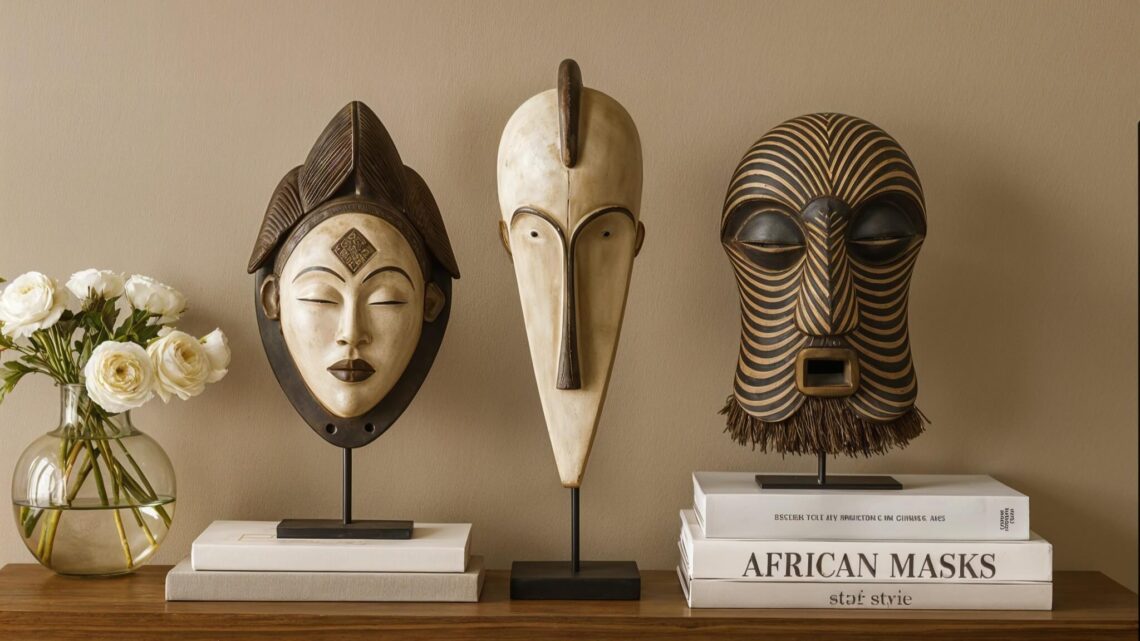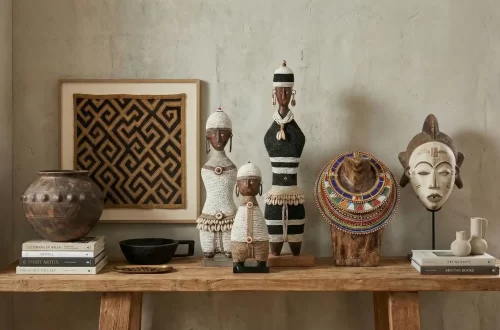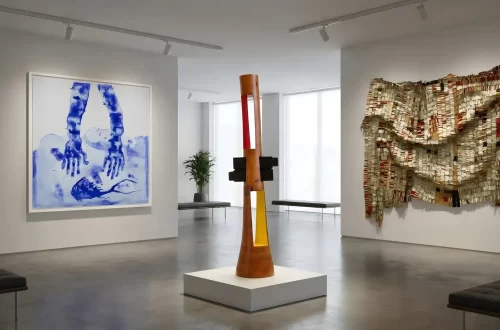Traditional African masks are like portals into another world. They reveal stories, beliefs, and rituals that have shaped communities for millennia. These aren’t just beautiful objects to admire from a distance. They’re sacred tools that have been used in ceremonies, celebrations, and spiritual gatherings for thousands of years.
In this guide, you’ll discover seven stunning masks from across the continent. I’ll walk you through their histories, their meanings, and what makes them so captivating. Then I’ll show you exactly how to bring these powerful pieces into your home with intention and style. Let’s get started.
Jump to:
- Why Traditional African Masks Still Matter Today
- 7 Iconic Traditional African Masks from Across the Continent
- How to Style Traditional African Masks in Your Home
Why Traditional African Masks Still Matter Today
Long before African sculpture captured the Western art world’s imagination, traditional African masks were already turning heads. And they deserved every bit of that attention.
These aren’t decorative objects but sacred tools—used in ceremonies that mark births, celebrate harvests, honor the dead, or call upon ancestral spirits. They hold the kind of meaning that transcends aesthetics.
Where You’ll Find Traditional African Masks
You’ll spot these masks used in rituals across West, Central, and Southern Africa. The designs are bold, symbolic, and often abstract. For instance, half-closed eyes might represent inner peace while a pronounced chin signals leadership and authority.
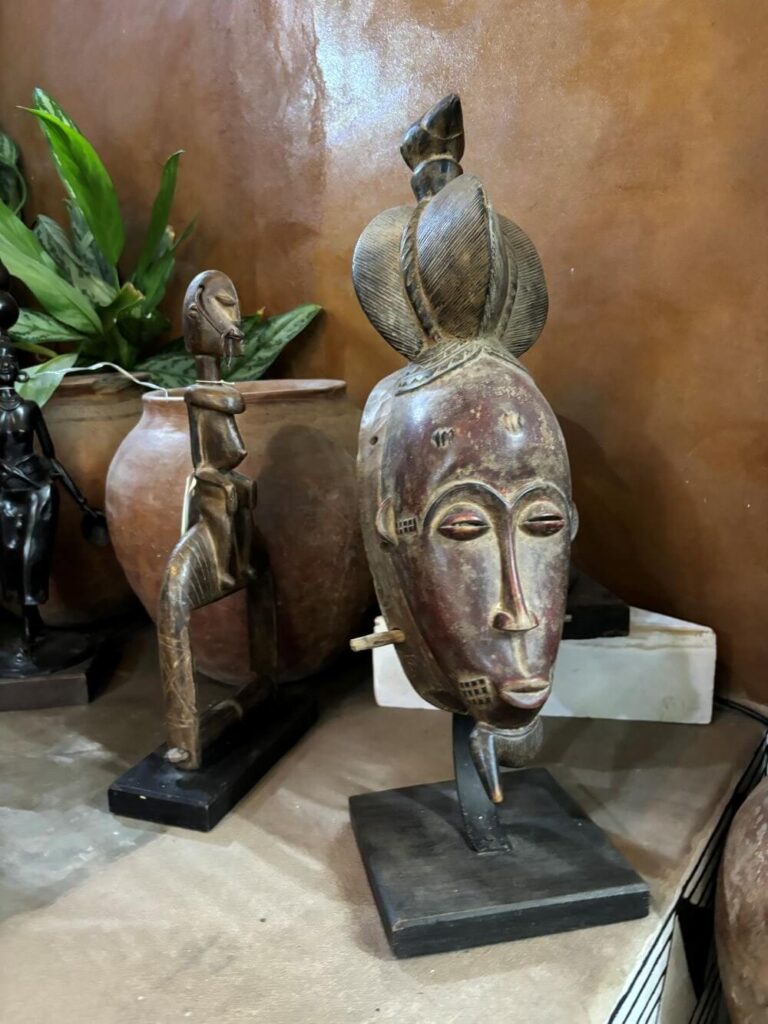
The Sacred Work Behind the Craft
Carving traditional African masks is not a casual project. The artists who create them—working with wood, raffia, shells, and natural pigments—are revered in their communities. Their craft is sacred work.
And when a dancer wears one of these masks? It’s transformational. The wearer becomes a bridge between the physical and spiritual worlds. Guided by drums, movement, and centuries of tradition, they embody forces that the living can’t touch on their own.
Some historians trace masks back to before the Paleolithic period. That’s over 2.5 million years ago. Their influence has rippled through time, helping to shape modern art movements that still inspire us today.
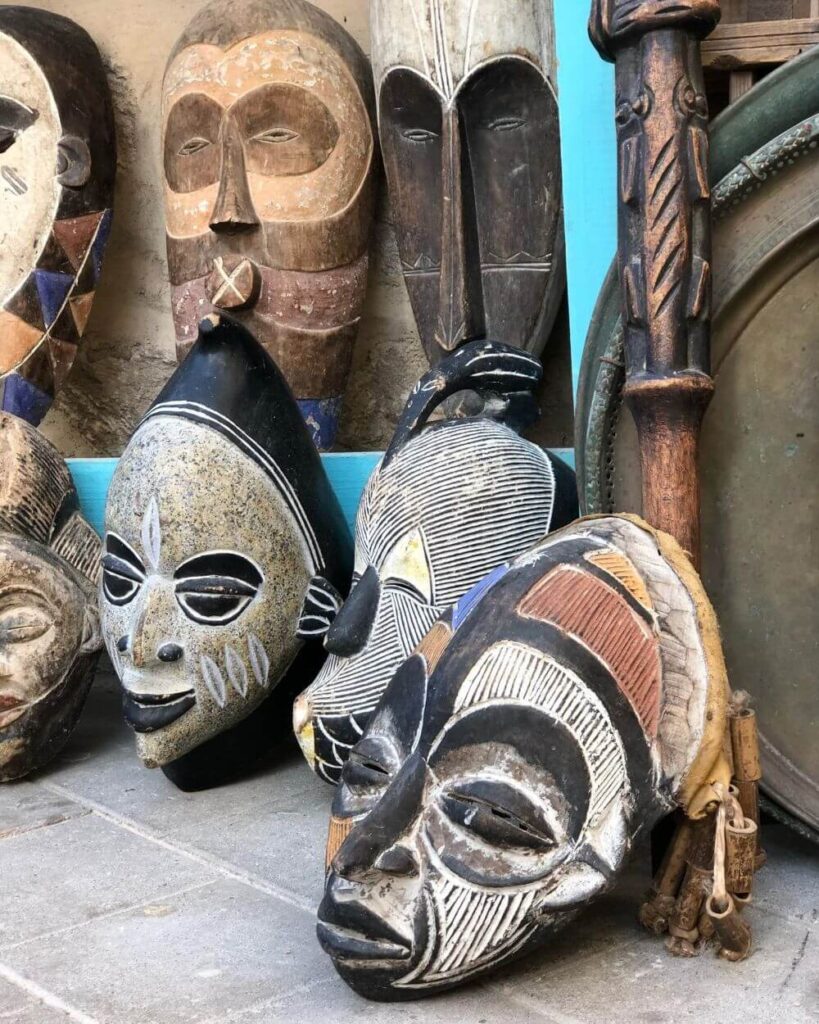
Source: History of Traditional African Masks
7 Iconic Traditional African Masks from Across the Continent
1. Songye Kifwebe Mask – Democratic Republic of Congo
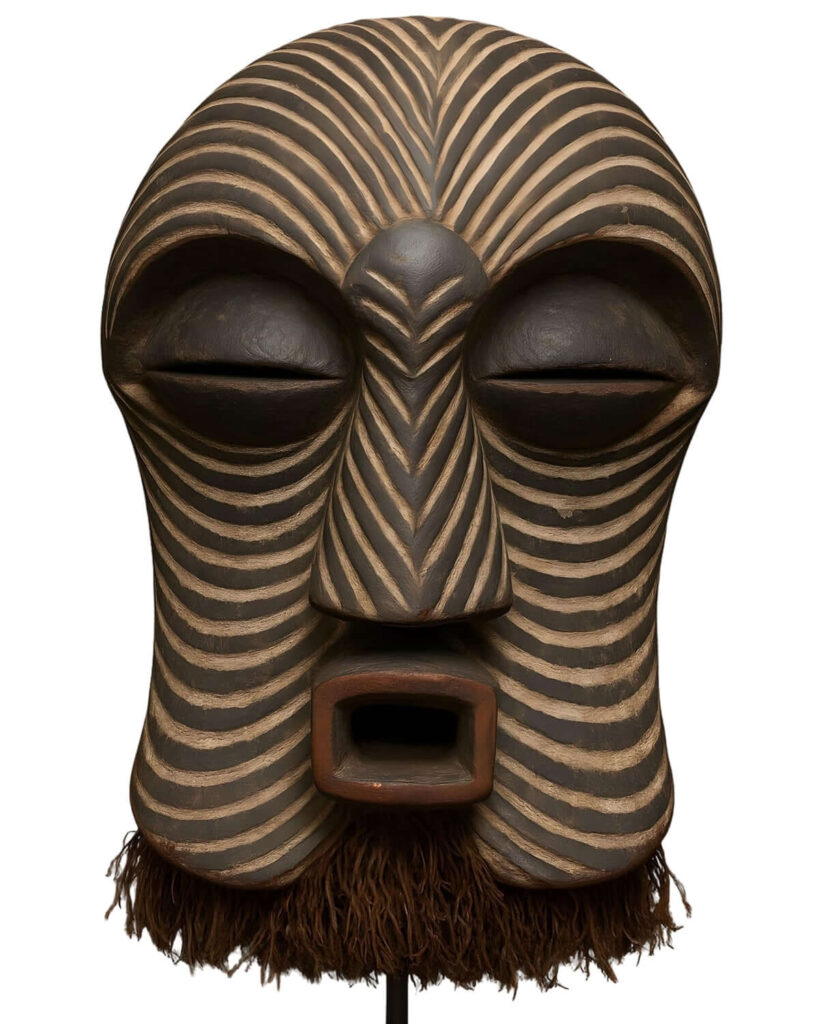
The Songye people carved these striking traditional African masks from wood. They feature bold lines etched across the face and come in three distinct forms: male, female, and child.
What makes them different:
- Male masks are vibrant and topped with a tall crest
- Female masks are white, rounder, and without the crest
- Both were used in rituals meant to maintain social order
White kaolin clay was rubbed into the grooves of female masks. Over decades, the paint wore away, revealing the natural wood underneath. That weathered look is what serious collectors hunt for.
2. Fang Ngil Mask – Gabon and Cameroon
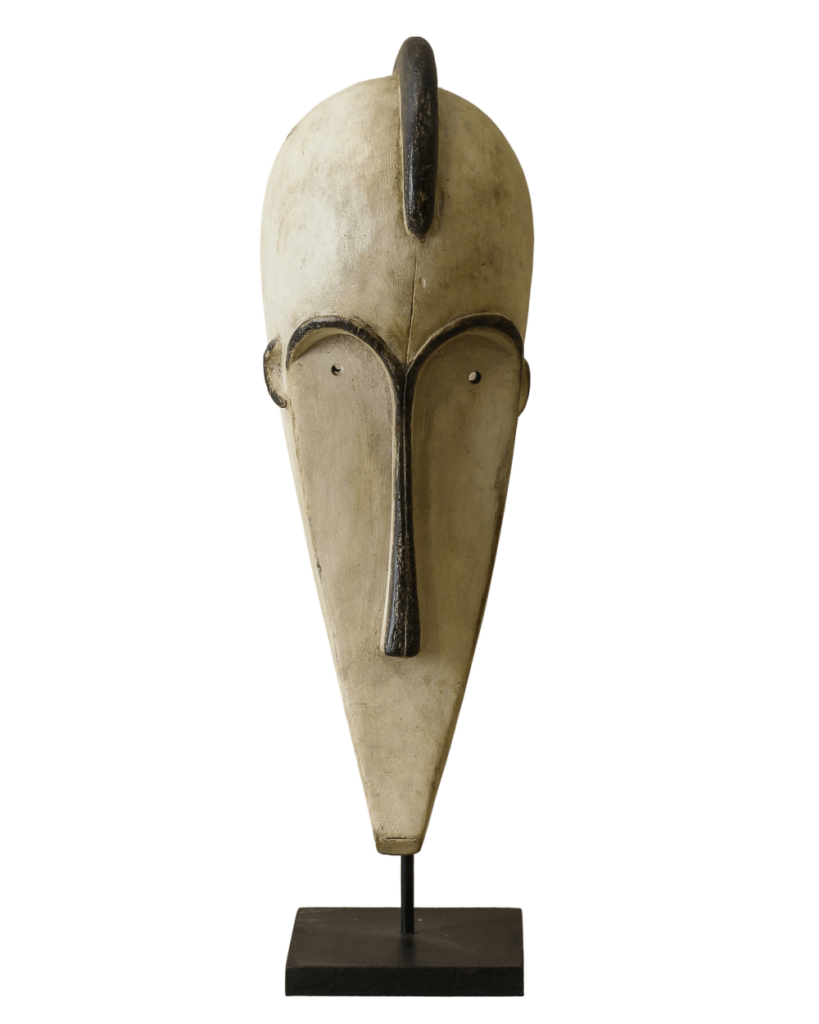
The Fang people created Ngil masks for a powerful male society. These traditional African masks were worn during ceremonies that exposed wrongdoing and challenged harmful spiritual forces.
Design features:
- Long and narrow profile
- High brows with almond-shaped eyes
- Extended nose and chin
- Smooth white surface from kaolinite clay
The pale color connects to concepts of manhood, ancestors, and the afterlife. Some scholars believe the shape was inspired by gorillas—a symbol of strength and justice in Fang culture.
3. Baule Goli Mask – Côte d’Ivoire
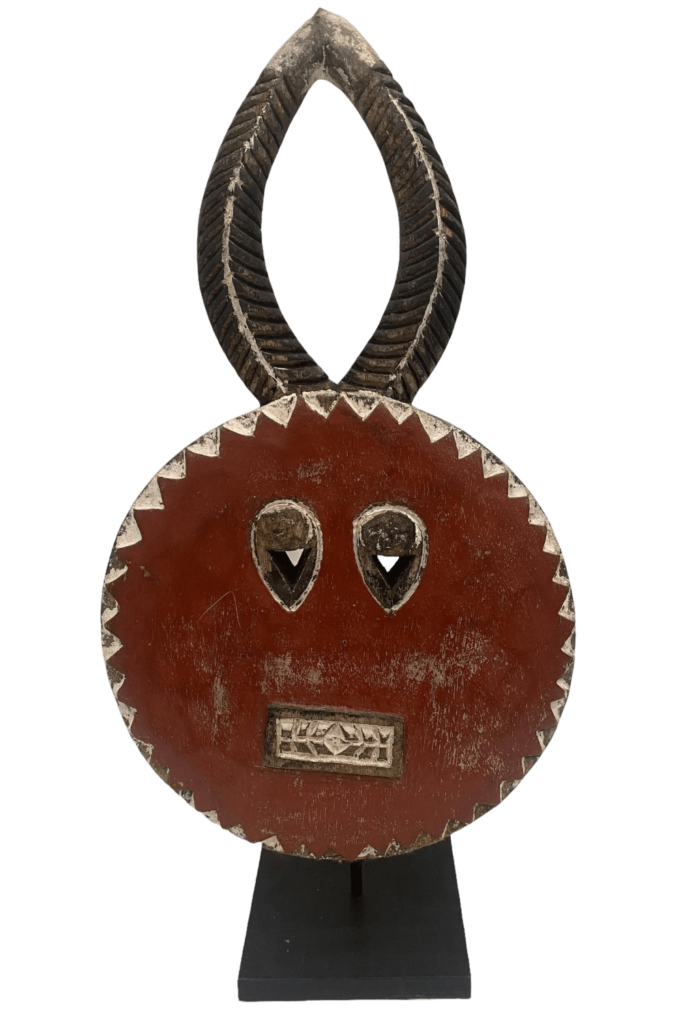
In Baule villages, Goli masks make dramatic appearances during all-day festivals or funerals for respected men. These performances include music, dance, and full-body costumes made from palm leaves.
What they represent:
- Animal traits mixed with forest spirits
- Buffalo horns for strength
- Round faces symbolizing the sun
The Baule weren’t going for realism here. Instead, they created something wild and powerful—meant to channel nature’s raw energy into the village center.
4. Dan Gle Mask – Liberia
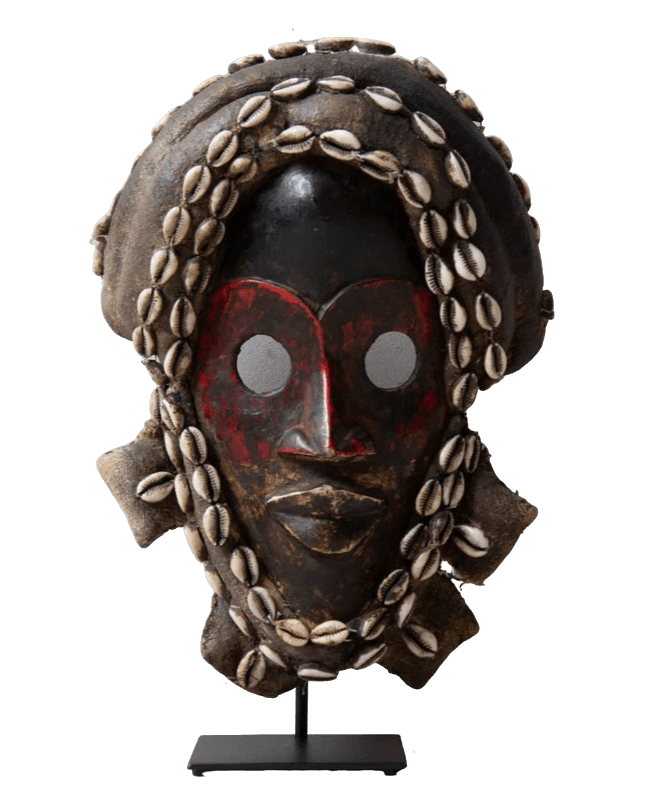
For the Dan people, traditional African masks serve as vessels for forest spirits. These spirits, called gle, reveal themselves through dreams to members of a men’s society.
The creation process:
- A spirit appears in a dream to a society member
- The dream reveals what the spirit looks like and wants
- A carver brings the vision to life
- The finished mask becomes a sacred object
During performances, masked dancers embody the spirit. These ceremonies help organize village life on both political and spiritual levels. The masks aren’t just art—they’re active participants in community governance.
5. Punu Okuyi Mask – Gabon
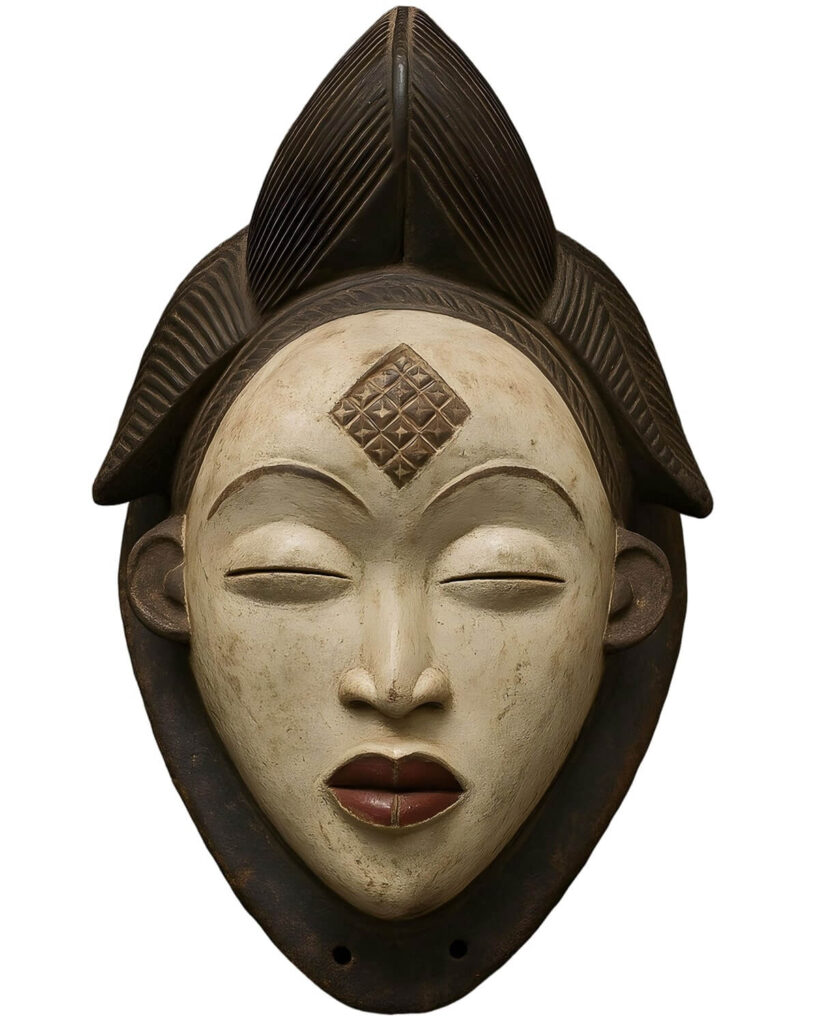
The Okuyi mask represents an idealized woman—graceful, youthful, and spiritually powerful. It appears in stilt dances performed at funerals and other cultural gatherings.
Distinctive features:
- Face covered in white chalk (linked to ancestors and protection)
- Arched eyes and high cheekbones
- Sculpted hairstyle inspired by 19th-century Punu women
- Red facial markings hinting at scarification patterns
Despite some past theories, this style developed right in Gabon. It’s an authentic expression of Punu culture, not an imported aesthetic.
6. Bwa Sun Mask – Burkina Faso

The Bwa people of Burkina Faso are known for bold, graphic wooden masks. Their sun masks are among the most striking traditional African masks you’ll see.
Design elements:
- Large, flat planks with a striking facial expression
- Circular face at one end, crescent at the other
- Owl-shaped eyes (linked to magic in Bwa beliefs)
- Hornbill beak-shaped nose
- Strong patterns and geometric designs
These masks are believed to hold spiritual power. Only trained dancers can safely control and channel that energy during ceremonies.
7. Chokwe Mwana Pwo Mask – Angola and DRC
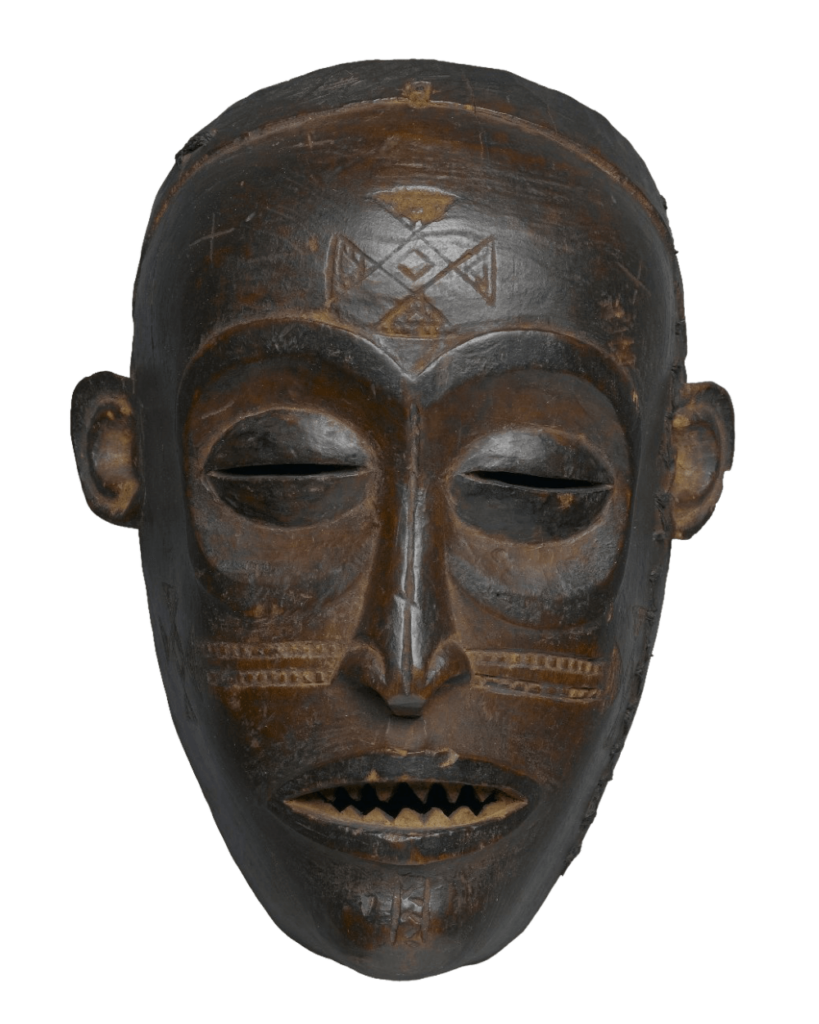
The Chokwe carve mwana pwo masks to honor the strength and beauty of female ancestors. Though made and worn by men, these traditional African masks celebrate young women and their vital role in society.
Key features:
- Delicate features with high foreheads
- Soft cheekbones and small mouths with filed teeth
- Raised markings showing scarification patterns
- Cross-shaped symbol on the forehead (possibly from Portuguese trade jewelry)
Performances with this mask are festive occasions. They’re meant to bless the audience with fertility and joy.
How to Style Traditional African Masks in Your Home
Traditional African masks don’t belong locked away in museums. They belong in homes that appreciate history, meaning, and beauty. Here’s how to style them with intention.
1. In Transitional Spaces
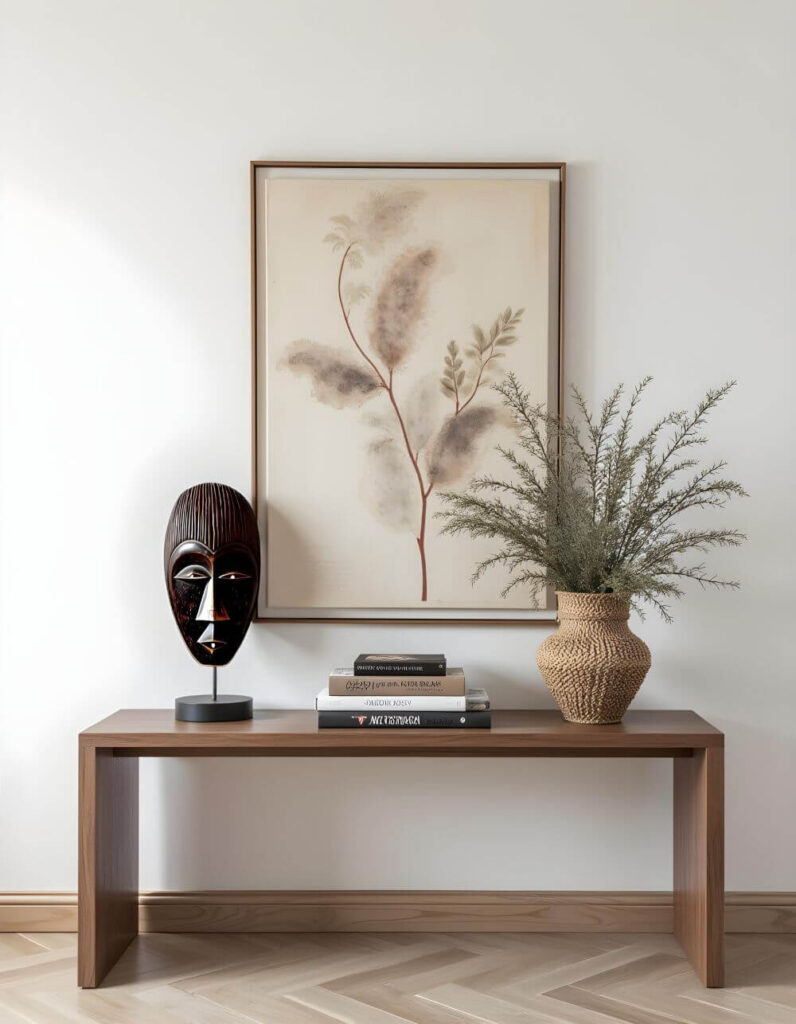
Hallways, foyers, entryways—these are spaces that carry movement and energy. Hanging a traditional African mask here, or placing it on a stand, creates a moment of stillness. Almost like a spiritual checkpoint between the outside world and your inner sanctuary.
Display options:
- On a pedestal or console table near the door for an eye-catching vignette
- Hung boldly on the wall so it greets everyone who enters
These masks are guardians, after all. It’s only fitting they watch over your threshold.
2. In Living and Gathering Areas
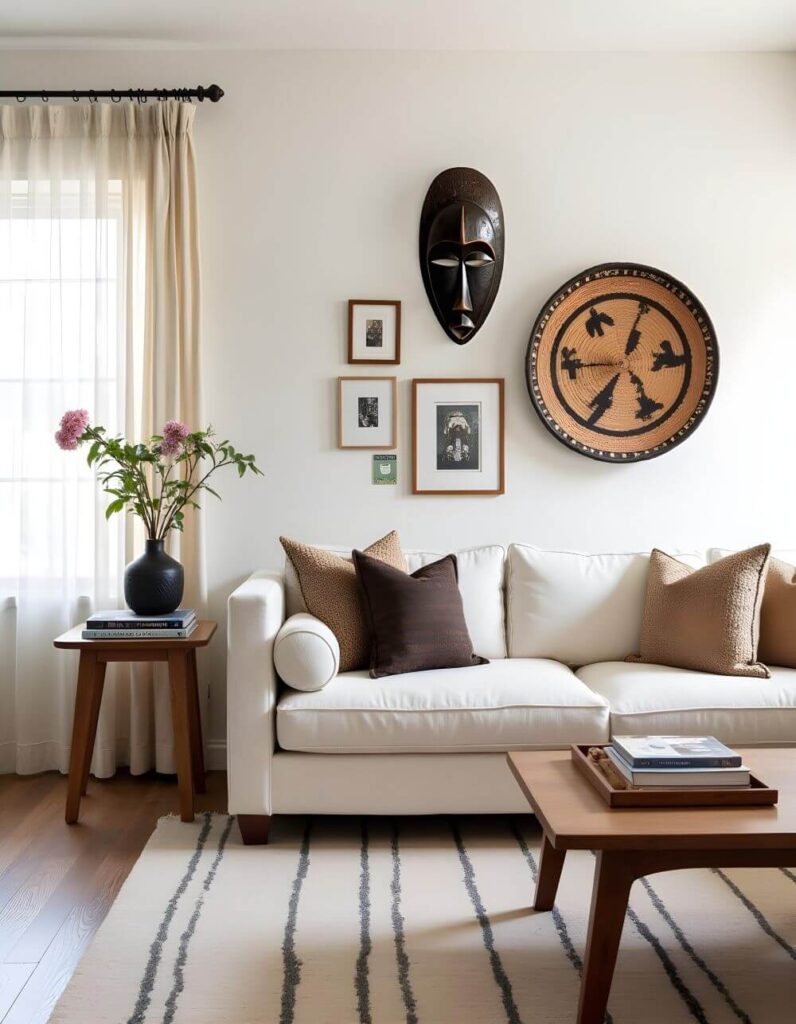
Traditional African masks bring powerful presence to the spaces where life unfolds. Hung above a fireplace mantle or positioned above the sofa, they become conversation starters and symbols of deeper connection.
Placement ideas:
- In the living room, hanged near your sofa—to participate in gatherings
- As a freestanding sculpture on a side table—adds dimension and ritual to everyday living
- In the dining room, over a sideboard—it feels like it’s quietly blessing shared meals
These masks anchor a room. They give it weight and soul.
3. As Part of a Collected Display

There’s nothing quite like a traditional African mask when it comes to adding soul to a curated collection. Its presence is grounding—mysterious, spiritual, and strikingly human all at once.
Where to place them:
- Central spot on a bookshelf
- Wall display in your home office
- Curated corner where your favorite pieces live
These are objects that carry stories, values, and ancestral weight. When placed thoughtfully, traditional African masks bring a powerful, grounding energy to your space. One that feels both deeply personal and universally sacred.
Traditional African masks are a way of honoring the layered history of African cultures.
When placed thoughtfully, these masks bring a powerful, grounding energy to your space—one that feels both deeply personal and universally sacred.
If you enjoyed this article, you’ll love our piece on 3 Famous West African Masks with Great Purchase Options

